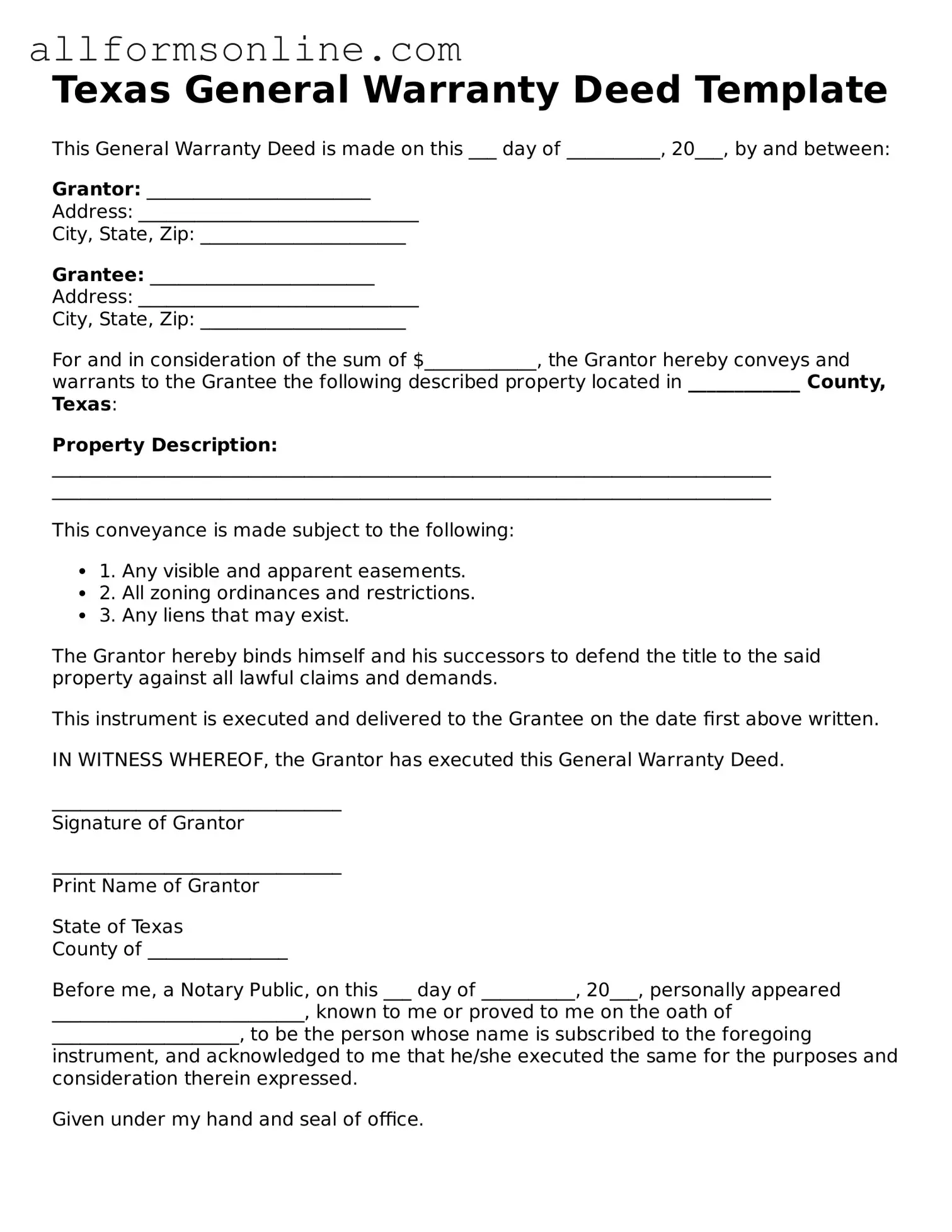What is a Texas Deed form?
A Texas Deed form is a legal document used to transfer ownership of real property in the state of Texas. It serves as proof of the transfer from one party to another. The form includes essential details such as the names of the grantor (the person transferring the property) and the grantee (the person receiving the property), a description of the property, and any conditions or restrictions related to the transfer. Understanding the specifics of the deed is crucial for ensuring a smooth transaction and protecting the rights of all parties involved.
What types of Texas Deeds are there?
There are several types of Texas Deeds, each serving different purposes. The most common include the General Warranty Deed, which provides the highest level of protection to the grantee by guaranteeing that the grantor holds clear title to the property and has the right to sell it. A Special Warranty Deed offers limited guarantees, only covering the period during which the grantor owned the property. A Quitclaim Deed, on the other hand, transfers whatever interest the grantor may have in the property without any warranties. Each type has its own implications, so it’s important to choose the right one based on your needs.
How do I complete a Texas Deed form?
Completing a Texas Deed form requires careful attention to detail. First, ensure you have the correct legal description of the property, which can typically be found in the property’s current deed or tax records. Fill in the names of the grantor and grantee, ensuring they are accurate and match the names on their identification. You will also need to sign the deed in front of a notary public. After the deed is signed and notarized, it must be filed with the county clerk’s office where the property is located to make the transfer official.
Is it necessary to hire a lawyer to prepare a Texas Deed?
While it is not legally required to hire a lawyer to prepare a Texas Deed, doing so can be beneficial. A legal professional can help ensure that the deed is correctly drafted and complies with Texas laws. They can also provide guidance on which type of deed is most appropriate for your situation and assist with any complex issues that may arise during the transfer process. If you feel uncertain about the process or the legal implications, seeking legal advice can provide peace of mind.
